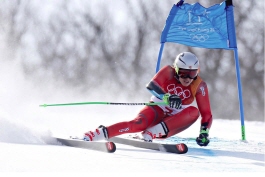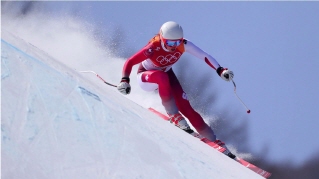 ICACT20230109 Slide.01
[Big Slide]
[YouTube] ICACT20230109 Slide.01
[Big Slide]
[YouTube] |
Chrome  Click!! Click!! |
 |
Hello everyone, I'm Li Yuhui, I'm from Chongqing, China. Next, I will report on the multi-user dynamic spectrum access algorithm based on deep reinforcement learning. |
 ICACT20230109 Slide.02
[Big Slide] ICACT20230109 Slide.02
[Big Slide]
|
Chrome  Click!! Click!! |
 |
Dynamic spectrum access (DSA) based spectrum
sharing is an effective technique to alleviate the shortage of radio
spectrum supply. Most of the existing schemes are only for simple heterogeneous cognitive radio networks. In this paper, we propose a distributed dynamic spectrum access scheme for complex heterogeneous cognitive radio networks. Simulation results show that the
algorithm can significantly improve spectrum utilization while
controlling the interference of SU to PU. This report consists of the following four parts, which are introduction, model, simulation results and conclusion. |
 ICACT20230109 Slide.03
[Big Slide] ICACT20230109 Slide.03
[Big Slide]
|
Chrome  Click!! Click!! |
 |
Part one. I will introduce the background and significance of the study. |
 ICACT20230109 Slide.04
[Big Slide] ICACT20230109 Slide.04
[Big Slide]
|
Chrome  Click!! Click!! |
 |
First, introduce the background. With the development of the information society, the rapid increase in the number of wireless devices has led to a sharp increase in the demand for wireless spectrum. However, the static spectrum allocation mechanism and the scarce wireless spectrum lead to the imbalance of spectrum supply and demand. We urgently need a technology to realize spectrum sharing. Secondly, the research significance is that dynamic spectrum technology can realize the sharing of wireless spectrum, which is conducive to solving the problem of spectrum imbalance between supply and demand. |
 ICACT20230109 Slide.05
[Big Slide] ICACT20230109 Slide.05
[Big Slide]
|
Chrome  Click!! Click!! |
 |
Part two. I will introduce the system model and algorithm formulation. |
 ICACT20230109 Slide.06
[Big Slide] ICACT20230109 Slide.06
[Big Slide]
|
Chrome  Click!! Click!! |
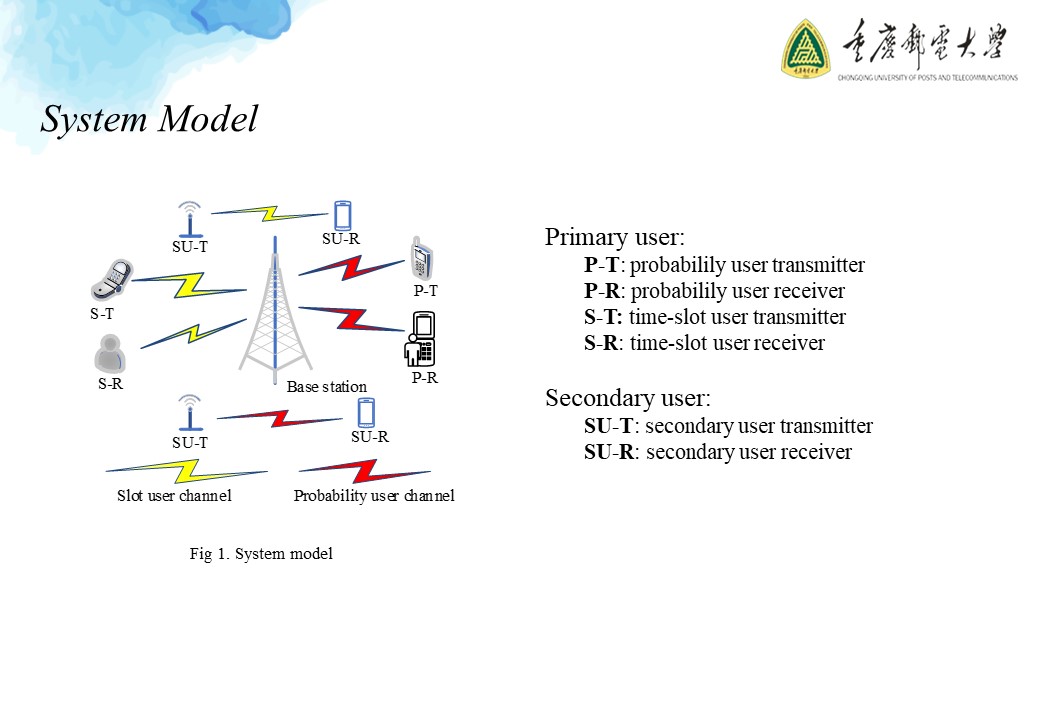 |
Figure 1 is a system model diagram. This is a heterogeneous cognitive radio network with multiple primary users, and each user is distributed in the space. |
 ICACT20230109 Slide.07
[Big Slide] ICACT20230109 Slide.07
[Big Slide]
|
Chrome  Click!! Click!! |
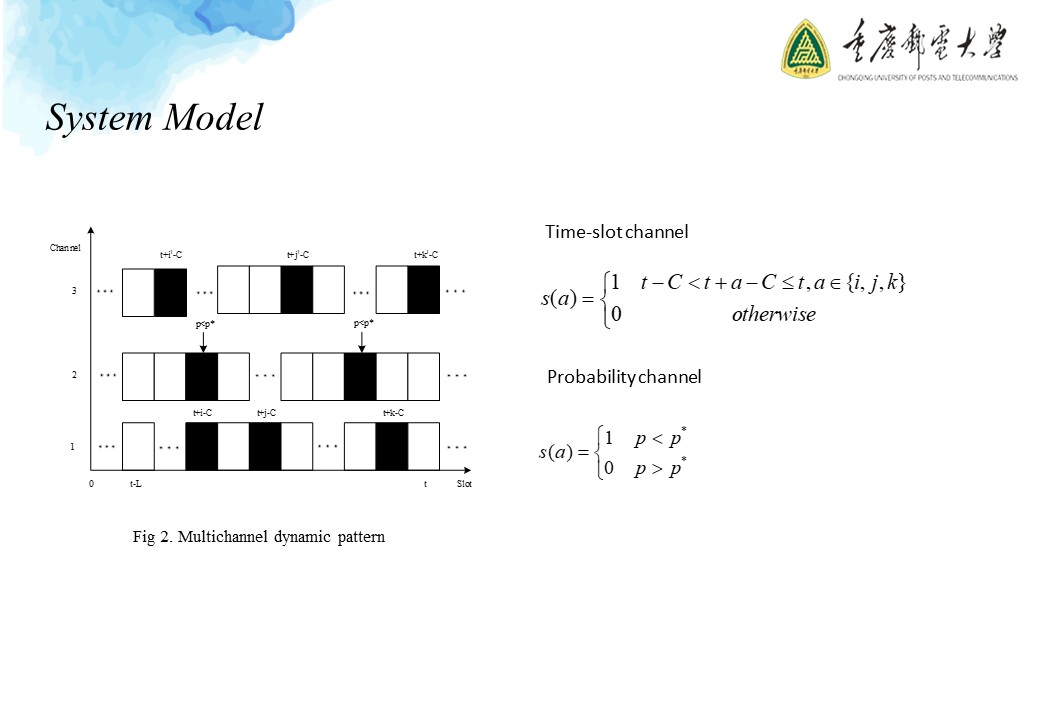 |
Figure 2 shows the channel dynamic model of two channels, time-slot channel and probability channel. On the right are formulaic descriptions of the dynamics of the two channels. |
 ICACT20230109 Slide.08
[Big Slide] ICACT20230109 Slide.08
[Big Slide]
|
Chrome  Click!! Click!! |
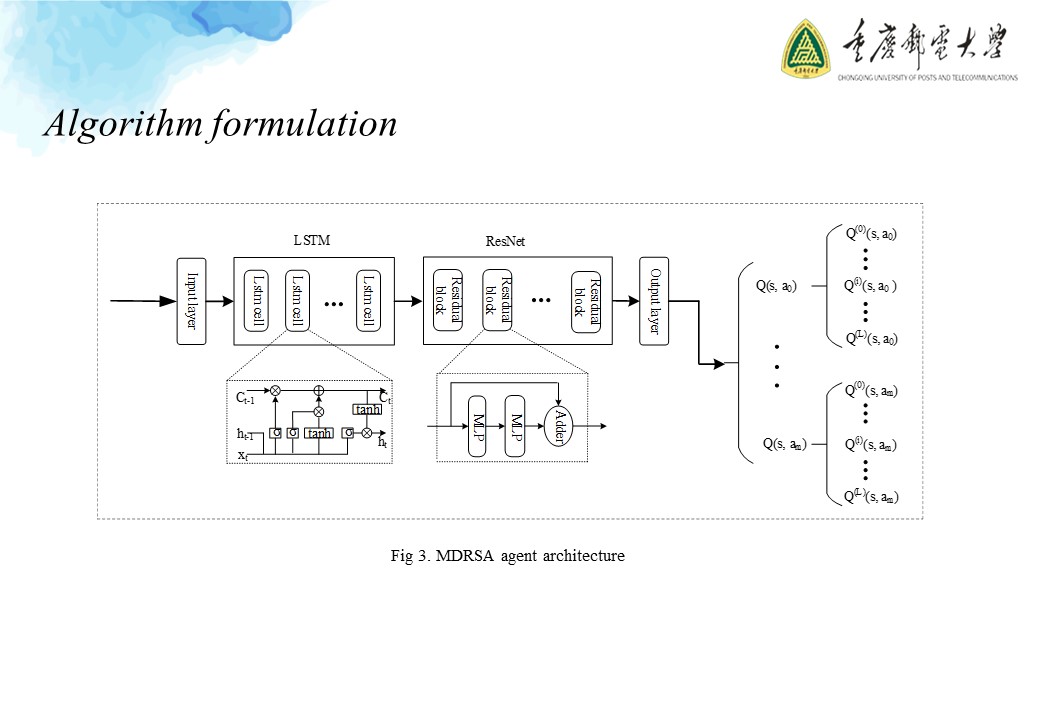 |
Figure 3 is the architecture of the algorithm MDRSA proposed by us. |
 ICACT20230109 Slide.09
[Big Slide] ICACT20230109 Slide.09
[Big Slide]
|
Chrome  Click!! Click!! |
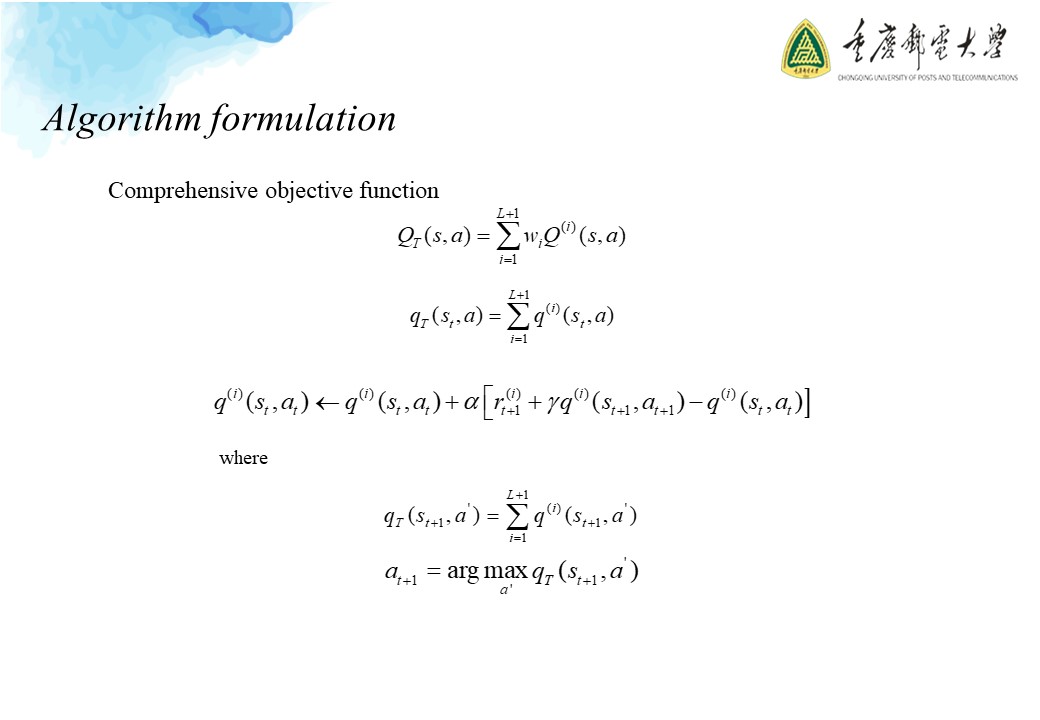 |
This shows how the comprehensive objective function is generated. |
 ICACT20230109 Slide.10
[Big Slide] ICACT20230109 Slide.10
[Big Slide]
|
Chrome  Click!! Click!! |
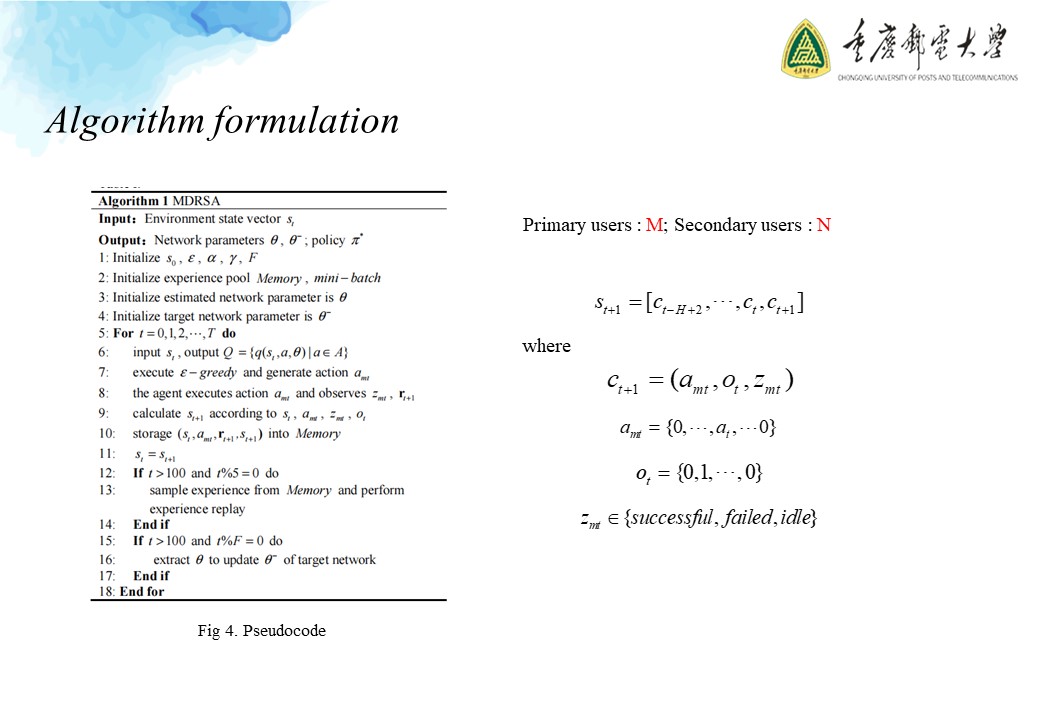 |
Figure 4 shows the pseudocode of the MDRSA algorithm. On the right is the input data for the algorithm. |
 ICACT20230109 Slide.11
[Big Slide] ICACT20230109 Slide.11
[Big Slide]
|
Chrome  Click!! Click!! |
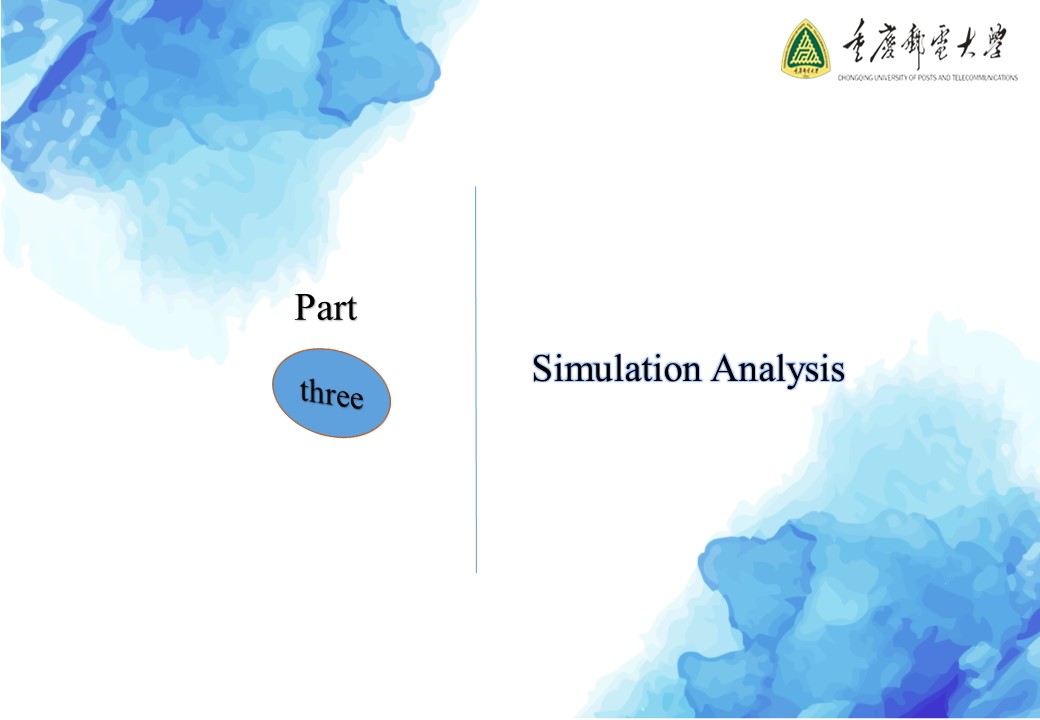 |
Part Four, Simulation Analysis. |
 ICACT20230109 Slide.12
[Big Slide] ICACT20230109 Slide.12
[Big Slide]
|
Chrome  Click!! Click!! |
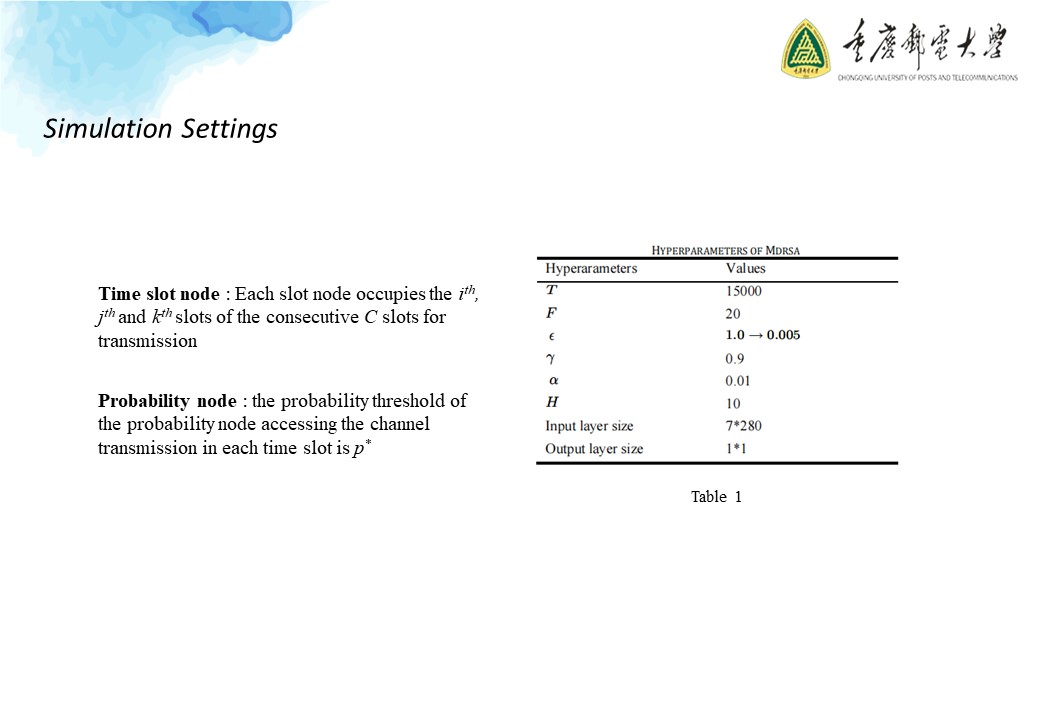 |
The simulation parameter and channel settings are shown here. |
 ICACT20230109 Slide.13
[Big Slide] ICACT20230109 Slide.13
[Big Slide]
|
Chrome  Click!! Click!! |
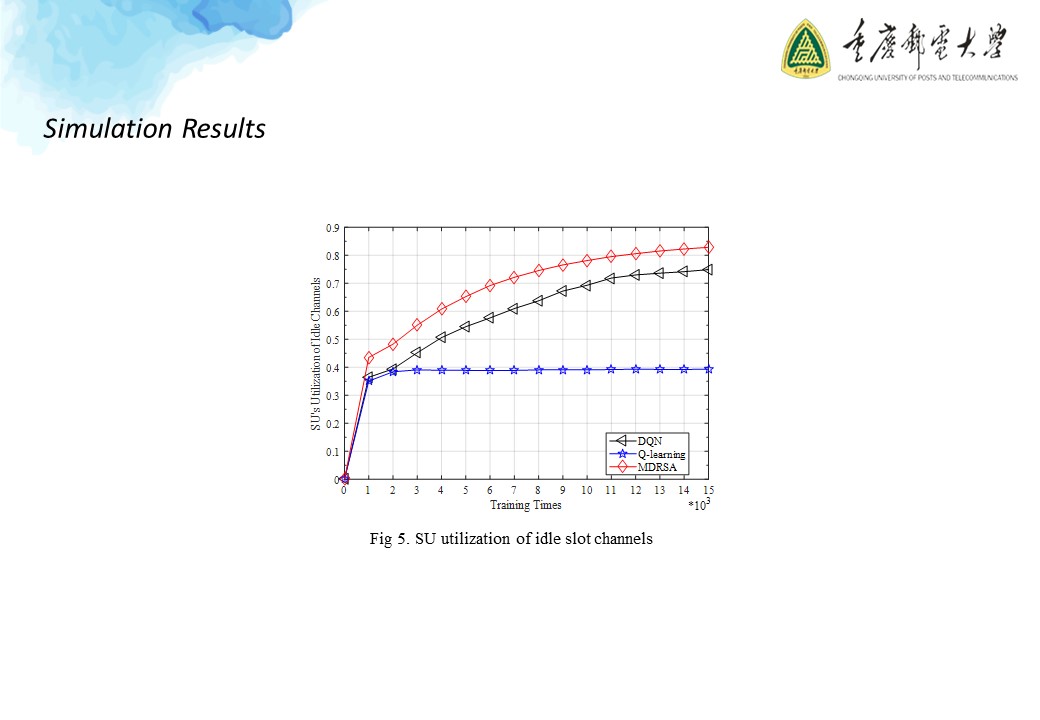 |
Figure 5 shows the utilization of idle channels by secondary users performing different algorithms. |
 ICACT20230109 Slide.14
[Big Slide] ICACT20230109 Slide.14
[Big Slide]
|
Chrome  Click!! Click!! |
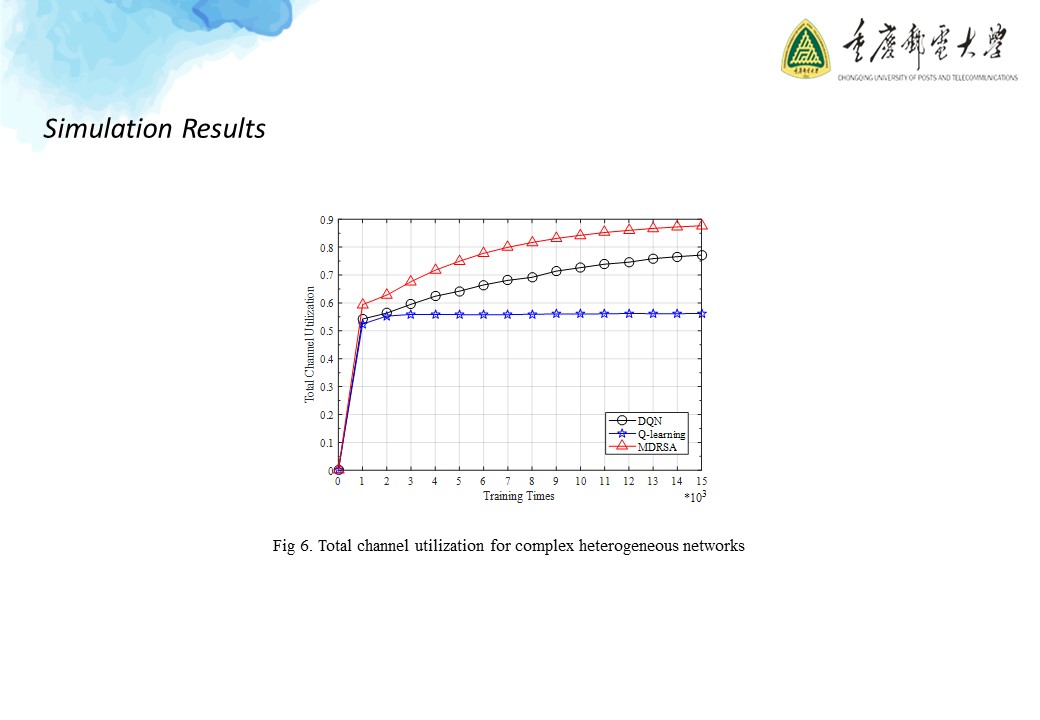 |
Figure 6 shows the total channel utilization under different algorithms. |
 ICACT20230109 Slide.15
[Big Slide] ICACT20230109 Slide.15
[Big Slide]
|
Chrome  Click!! Click!! |
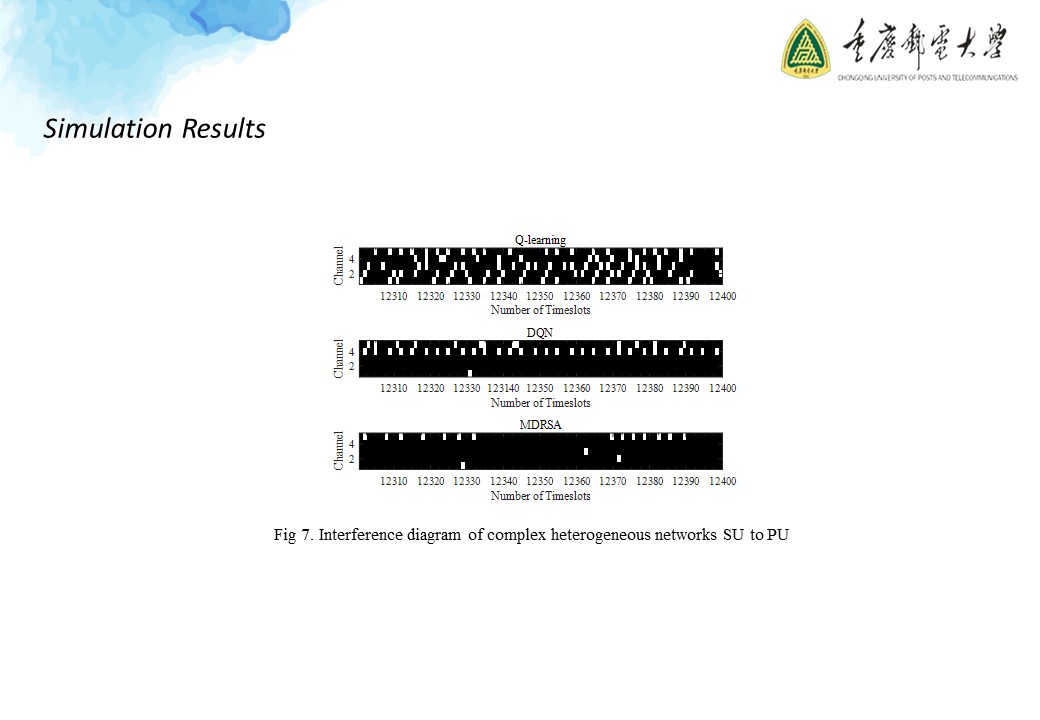 |
This figure shows the interference rate of secondary users to primary users under different algorithms. |
 ICACT20230109 Slide.16
[Big Slide] ICACT20230109 Slide.16
[Big Slide]
|
Chrome  Click!! Click!! |
 |
The fourth part, experimental conclusion. |
 ICACT20230109 Slide.17
[Big Slide] ICACT20230109 Slide.17
[Big Slide]
|
Chrome  Click!! Click!! |
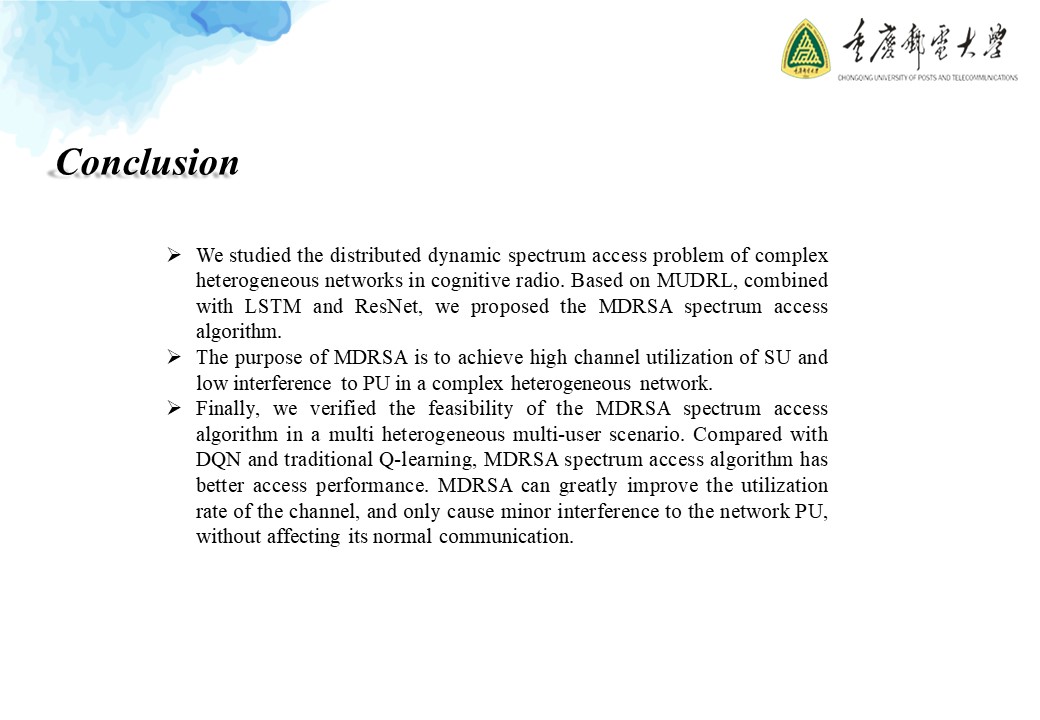 |
conclusion. |
 ICACT20230109 Slide.18
[Big Slide]
[YouTube] ICACT20230109 Slide.18
[Big Slide]
[YouTube] |
Chrome  Click!! Click!! |
 |
Thank you for your observation and welcome your comments. |


